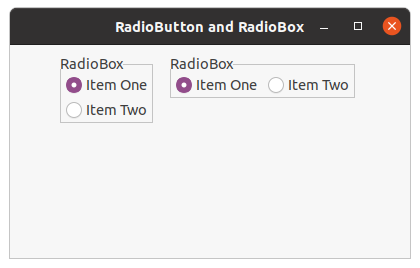wxPython wx.StatusBar中的Create()函数
在这篇文章中,我们将学习与wxPython的wx.StatusBar类相关的Create()函数。与StatusBar()构造函数类似,Create用于向状态栏添加属性,而状态栏变量应使用StatusBar()构造函数初始化,不需要任何参数。
Create将状态栏的属性作为参数。
语法: wx.StatusBar.Create(self, parent, id=ID_ANY, style=STB_DEFAULT_STYLE, name=StatusBarNameStr)
参数 。
| 参数 | 输入类型 | 说明 |
|---|---|---|
| parent | wx.Frame | 连接状态栏的父框架。 |
| id | int | 用于状态栏的标识符。 |
| style | 长 | 状态栏的样式。 |
| name | 字符串 | 与状态栏相关的名称。 |
代码示例 。
import wx
class Example(wx.Frame):
def __init__(self, *args, **kwargs):
super(Example, self).__init__(*args, **kwargs)
self.InitUI()
def InitUI(self):
self.locale = wx.Locale(wx.LANGUAGE_ENGLISH)
# INITIALIZE USING EMPTY CONSTRUCTOR
self.statusbar = wx.StatusBar()
# CREATE STATUS BAR USING CREATE FUNCTION
self.statusbar.Create(self, id = 1, style = wx.STB_DEFAULT_STYLE,
name = "Status Bar")
self.statusbar.SetStatusText("Hello there this is a Status Bar")
self.SetStatusBar(self.statusbar)
self.SetSize((350, 250))
self.SetTitle('New Frame Title')
self.Centre()
def main():
app = wx.App()
ex = Example(None)
ex.Show()
app.MainLoop()
if __name__ == '__main__':
main()
输出窗口 。

 极客教程
极客教程